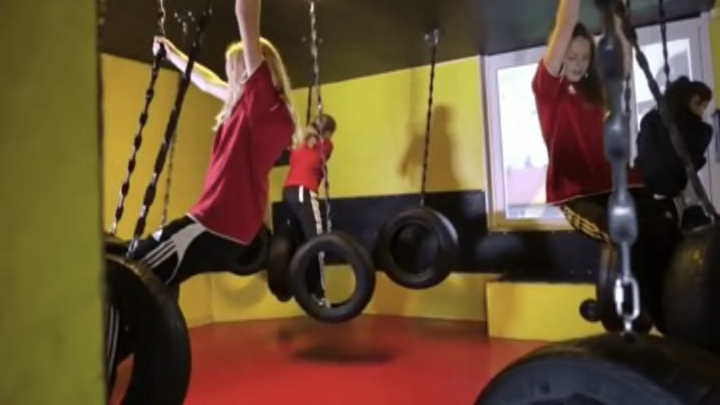Malden, a suburb within commuting distance of Boston, Massachusetts, has a few secrets hidden in a 30,000-square-foot space formerly occupied by a department store. There's a haunted mansion, a submarine, a battlefield, and a dance floor, just to name a few. These diverse settings are among 18 different “quests” available to visitors at Boda Borg Boston, the first American outpost of a Swedish gaming company specializing in real-life, full-immersion mental and physical challenges for puzzle enthusiasts with a taste for adventure.
The first Boda Borg in Sweden came to be in the mid-1990s as the pet project of three engineers looking for a way to have fun with their kids. They designed puzzle rooms that turned thinking exercises into tangible experiences, requiring a combination of logic, creativity, and physical prowess to figure their way out of the quest, with not even a single starting hint to guide their progress—which is to say, the rules are that there are no rules. An abandoned insane asylum in the small, out-of-the-way Swedish town of Torpshammar proved the perfect space for such an offbeat venture, and from there, Boda Borgs grew to an international franchised operation with seven locations in Sweden, one in Ireland, and now one in the United States.
In contrast to the existing escape room experiences that are currently experiencing a surge of interest across the country, Boda Borg incorporates the body as well as the brain. Questers can choose from three levels of challenge: green, red, and black. Green quests require minimal physical exertion, but may call for a certain quality of mental toughness. Red quests introduce limited physical elements, just enough to get the blood pumping—say, reaching or jumping or crawling through a tunnel. Black quests are, predictably, reserved for those equally confident in both their thinking skills and their physical fitness. They’re tough enough that not even Boda Borg Boston owner Chad Ellis has completed all the ones he offers, and he insists that he’s “in fairly good shape, and [...] even doing some strength training!” It’s more exercise than sitting in front of an XBox, to say the least. No wonder the only Quest Masters (the honorific awarded to the happy few who have completed all of a location’s available quests) in Boston thus far have been a family of gymnasts.
Though the experience is generally safe for families with children as well as adult friends looking for a fun day out, Boda Borg warns that the fun doesn’t come without some slight potential for harm. The website’s straightforward answer to the concern, “Is it risky?” reads, “Well, life is risky, and we try hard to mimic life-like adventures (it’s key to the excitement)...so there’s always risk.” Fair enough.
It’s also possible to lose a Boda Borg quest. In fact, losing is built into the structure of the gameplay. Since so much of a team’s attempts to solve the puzzle rely on basic trial and error, there’s a simple system to inform participants whether they’ve succeeded or failed: green light means go on to the next stage of the challenge, red light means sorry, try again. After completing a quest, successful teams get to mark their victory with a stamp on their game cards, effectively saving their progress throughout the location’s entire quest catalog. Here too, the parallels with other types of games are evident.
Despite the quests’ similarity in structure to more traditional, at-home gaming experiences, Boda Borg Corp. president and CEO David Spigner stresses that “this is not video games [...] It’s like taking Indiana Jones off the screen and making you him.” Without the life-threatening danger, who wouldn’t want that?
